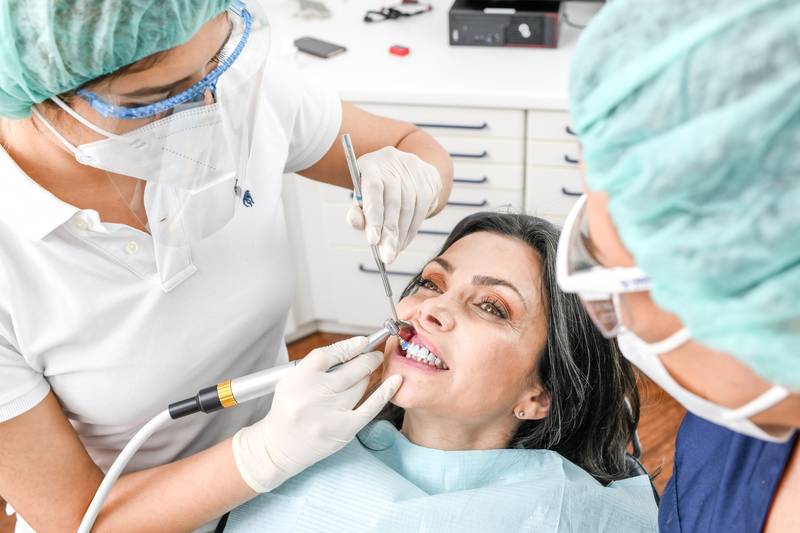The case numbers over recent years confirm the trend toward the broad use of prosthetic implant therapy. Considerably more than 800,000 implants were implanted by German dental practices during 2009, which corresponds to an increase of almost ten per cent on the previous year. This explosive growth reflects the continuing demand from patients who have decided in favour of an implant-supported prosthetic - which is also easier on the residual dentition. Implantology has been accompanied by intensive research and development work on the part of science and the dental industry for years. Dentists, dental technicians and surgery staff can optimally acquaint themselves with the state of the art in this innovative specialisation and receive advice from expert manufacturers at the International Dental Show (IDS), which takes place in Cologne from 22nd to 26th March 2011. There, dentists and dental technicians will have the unique opportunity to gain a comprehensive overview of the latest concepts in implant geometries and materials as well as the superstructures possible today. Endosseous implants are now available from many manufacturers and in many variations, with the result that an implant-supported prosthetic solution can be realised for almost every dental indication. Zirconium oxide ceramic is gaining in importance alongside the classic implant material titanium. Completely ceramic implants, mesostructures and crowns, peg-supported and bridge-supported superstructures can be manufactured from the material by means of CAD/CAM. Standardised abutments are also prefabricated from titanium or zirconium oxide and can be used for cementable or telescopic restorations. Thanks to modern digital milling processes, an alternative to these prefabricated items that enables the increasing individualisation of superstructures is about to gain ground. Today, one and two-part abutments can already be individually designed at acceptable cost and adapted to the gingival margins in a beneficial manner. Individual implant superstructures are increasingly being manufactured using industrial milling centres as well as in-house at the dental laboratory. Specialist companies in the dental industry are now even offering to design and manufacture complex peg or bridge-supported superstructures. This provides the commissioning laboratory with increased freedom and makes it possible, for example, to invest more effort in the subsequent finishing work in ceramic or plastic. Thanks in part to the increasing networking of its team members - therapeutic personnel, dental technicians and industry - implantology is significantly boosting quality management at all process levels. External manufacture of implant-supported superstructures can offer logistical and financial advantages. As far as the laboratory is concerned, considerably lower investment volumes are required. For example, it is no longer necessary to use suitable scanners and corresponding design software, both of which are used by dental technicians to digitalise the finished model and perfectly plan the implant prosthetic. The latest variants of CAD/CAM-supported processes for manufacturing implant-supported prosthetics are opto-digital processes that have been developed in such a way that (plaster) models are no longer required. These variants are on show at IDS. Here, the implant prosthetic is calculated directly on the basis of a digital scan and subsequently manufactured using a milling process. However, the error-free tuning of the entire digital process chain - which is an essential precondition for a model-free prosthetic restoration - requires special care. Nowadays, implantological progress is also closely bound up with diagnostic developments. Three-dimensional X-ray navigation processes combined with laser scans of plaster models and special design software enable the dentist to optimally and reliably plan implantological measures. Even in difficult cases, exact 3D images of the osseous structures can be created - particularly using digital volume tomography, which has, in the meantime, also become affordable for smaller practices. Using this technique in combination with modern planning and design software, implantologists can obtain extremely precise stereolithographic guide templates. With these templates, it is possible to achieve previously unheard of precision when it comes to implant bed preparation and implant insertion. Today, the dental industry makes available to the practitioner an entire pallet of powerful imaging techniques and user-friendly software which, thanks to the international DICOM standard, is compatible and interoperable between manufacturers. New developments in the area of implantologiical instruments will also be on show at IDS. Renowned manufacturers will, for example, be showing atraumatic dental forceps which reduce stress on the alveolar tissue, or modern cylinder osteotomes, efficient bone mills or complete surgical units for oral and maxillofacial surgery. Optimised processes for retaining the alveolar process, for augmentation or for alveolar distraction osteogenesis will also be presented. Another topic at the International Dental Show is current biotechnological strategies for osseogenis - up to and including adult stem cell technology. New developments in bone marrow stem cells will be presented as will bone replacement materials or other osteogenic factors. Carrier membranes and biologically resorbable bone pegs - partly of collagen or mucous membrane material - form additional important implantological themes. The specialist implantological associations, which will, of course, be represented at IDS, will present their latest curricular projects. They offer interested dentists optimal opportunities with regard to introductory and continuing training in these disciplines, which are becoming ever more important. Current topics, such as implant prosthetics in senior dentistry, digital navigation as well as new approaches to solutions for periimplantitis or perimucositis, are tackled as part of the advanced training. Both new practitioners and experienced dentists - possibly accompanied by their dental technicians - will thus find it worthwhile to visit the stands of the implantological associations as they move around IDS. Such a visit will enable them to discover for themselves the best way to gain access to this fascinating area. "From 22nd to 26th March 2011, the International Dental Show in Cologne - the world's largest trade fair for dental medicine and dental technology - will provide trade visitors from dental practices and dental laboratories an ideal opportunity to talk to specialists from the exhibiting companies, experts and experienced users. Here, they will be able to address the whole spectrum of modern implant concepts and current developments in this rapidly expanding discipline of dental medicine," says Dr. Markus Heibach, President of the VDDI. IDS (the International Dental Show), which takes place in Cologne every two years, is organized by the Gesellschaft zur Förderung der Dental-Industrie mbH (Society for the Promotion of the Dental Industry), the commercial enterprise of the Association of German Dental Manufacturers (VDDI). The trade fair is staged by Koelnmesse GmbH, Cologne.
Note for editorial offices:
Photos from the last IDS Cologne are available in our image database on the Internet (www.ids-cologne.de), "For the Press".
If you reprint this document, please send a voucher copy.
- Alter:
4948 Tage



